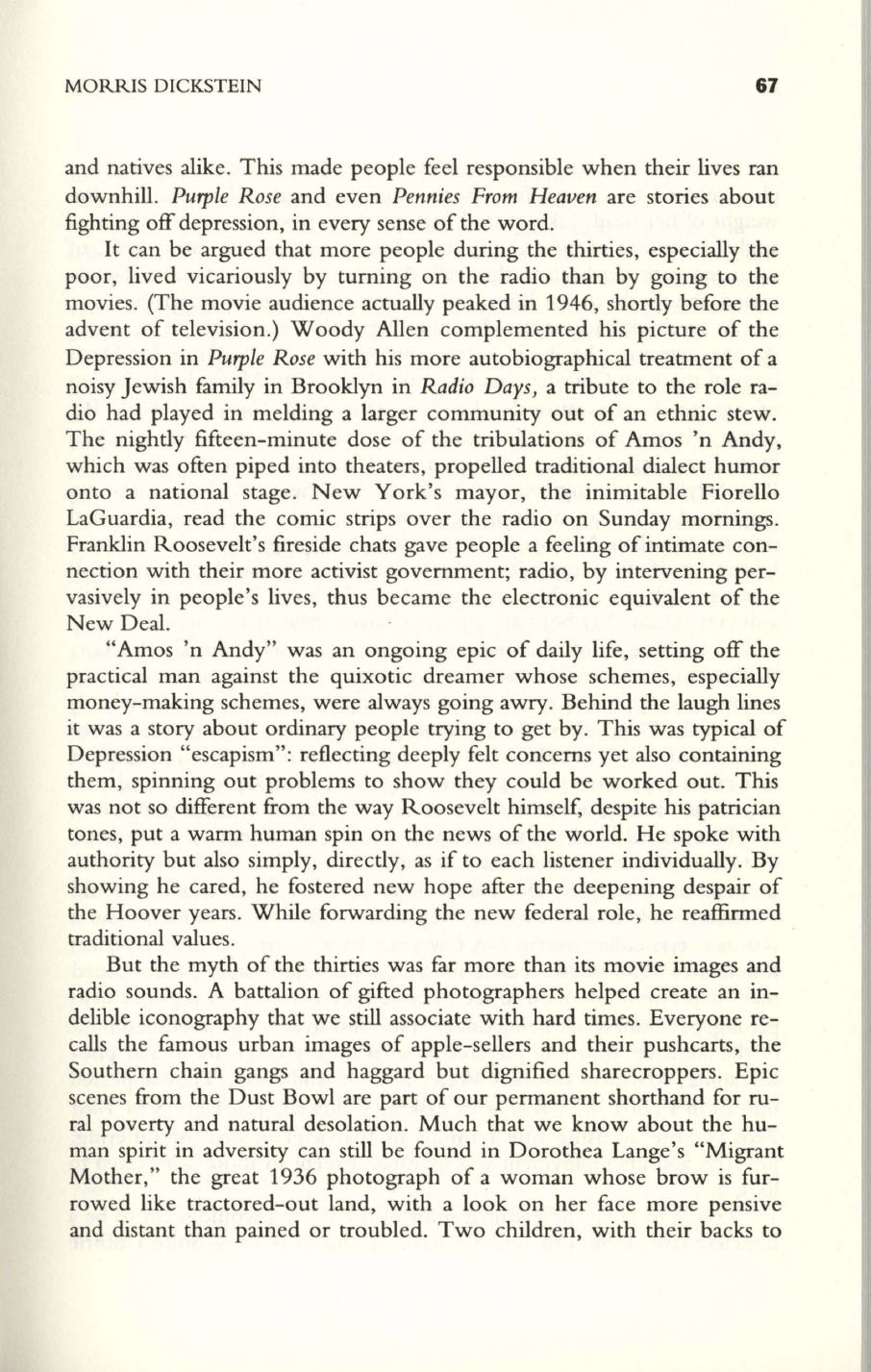
MORRIS DICKSTEIN
67
and natives alike. This made people feel responsible when their lives ran
downhill.
Purple Rose
and even
Pennies From Heaven
are stories about
fighting off depression, in every sense of the word.
It can be argued that more people during the thirties, especially the
poor, lived vicariously by turning on the radio than by going to the
movies. (The movie audience actually peaked in 1946, shortly before the
advent of television.) Woody Allen complemented his picture of the
Depression in
Purple Rose
with his more autobiographical treatment of a
noisy Jewish family in Brooklyn in
Radio Days,
a tribute to the role ra–
dio had played in melding a larger community out of an ethnic stew.
The nightly fifteen-minute dose of the tribulations of Amos 'n Andy,
which was often piped into theaters, propelled traditional dialect humor
onto a national stage. New York's mayor, the inimitable Fiorello
LaGuardia, read the comic strips over the radio on Sunday mornings.
Franklin Roosevelt's fireside chats gave people a feeling of intimate con–
nection with their more activist government; radio, by intervening per–
vasively in people's lives, thus became the electronic equivalent of the
New Deal.
"Amos 'n Andy" was an ongoing epic of daily life, setting off the
practical man against the quixotic dreamer whose schemes, especially
money-making schemes, were always going awry. Behind the laugh lines
it was a story about ordinary people trying to get by. This was typical of
Depression "escapism": reflecting deeply felt concerns yet also containing
them, spinning out problems to show they could be worked out. This
was not so different from the way Roosevelt himself, despite his patrician
tones, put a warm human spin on the news of the world. He spoke with
authority but also simply, directly, as if to each listener individually. By
showing he cared, he fostered new hope after the deepening despair of
the Hoover years. While forwarding the new federal role, he reaffirmed
traditional values.
But the myth of the thirties was far more than its movie images and
radio sounds. A battalion of gifted photographers helped create an in–
delible iconography that we still associate with hard times. Everyone re–
calls the famous urban images of apple-sellers and their pushcarts, the
Southern chain gangs and haggard but dignified sharecroppers. Epic
scenes from the Dust Bowl are part of our permanent shorthand for ru–
ral poverty and natural desolation. Much that we know about the hu–
man spirit in adversity can still be found in Dorothea Lange's "Migrant
Mother," the great 1936 photograph of a woman whose brow is fur–
rowed like tractored-out land, with a look on her face more pensive
and distant than pained or troubled. Two children, with their backs to


